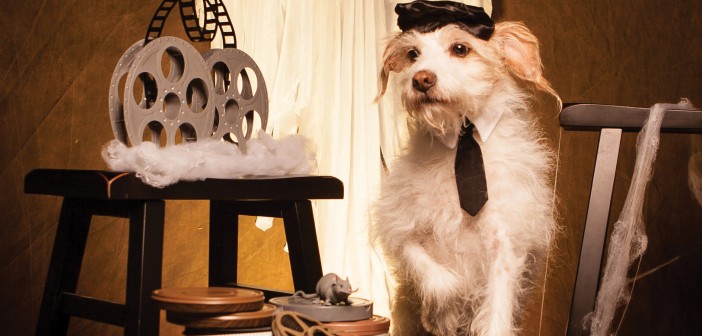The PAWPARAZZI Film Festival is less than three months away, are you ready? Short film submissions are due December 20, 2015 and you can submit anything from 30 seconds to 10 minutes. Now is your chance to make Fido a star! Stetson is waiting with a bowl of popcorn to watch the show!
PAWPARAZZI is an international film festival, which means that we anticipate a variety of submissions from different viewpoints — drama, comedy, animation, documentary, and films by youth. Animals are captivating in movies because they are unpredictable and honest, but getting them on film can prove challenging. Whether you are a returning contender or entering for the first time, it’s helpful to seek out advice from the experts and other festival winners.
One of the favorite standout animal films at the Cannes and Sundance Film Festivals in 2015 was “White God”, a Hungarian film centered on the story of a 13-year old girl whose father sets her dog free into the streets, where he must learn to live among the packs of wild dogs who roam the city, as he tries to find his way back to his best friend. Besides the magical storytelling, there is a true mastery of animal training and cinematography that allowed the filmmakers to capture hundreds of dogs on film. So, how did they get the perfect shot of hundreds of dogs when we struggle to get Fido to sit still for a family portrait?
The following are tried and true tips from film professionals to help even the most novice cinematographer get that perfect scene — whether on a family hike or while creating a PAWPARAZZI film.
Tops Tips for Filming with Pets
Study other animal movies and films: You can learn a lot from watching other animals in action. Films like “White God”, “The Incredible Adventure”, “Lassie” and even last year’s PetDance comedy winner, “Chihuahuatown” by Sean and Eric Wing, are perfect study material.
Use a tripod: Set the camera steady and encourage your pet (dog, cat, alpaca, turtle, lizard, etc.) to perform on stage. This allows you to interact and engage with your companion without missing the shot.
Use nature: Don’t limit yourself to being inside. It’s more interesting for animals to explore the outdoors and your composition will be more appealing to the viewer. Trade the scenery of your living room furniture for the great outdoors!
Use natural light: In the same way you’ll find a better shot in nature, natural light captures the best of your pet without a big flash that might scare them or give them the red-eye that distorts their image.
Use a trained animal: Depending on how seriously you want to take your filming, consider using a well-trained animal over your friend’s new puppy. It’s also wise to consider working with animal trainers and their critters if you want to shoot exotic birds, lizards or snakes.
Avoid distractions: If you want a scene to be perfect, then make sure to remove all other distractions for your pets. This includes other animals, loud noises, crowds, all things that make professional and non-professional animal actors nervous.
Use more than one camera: Professional human actors say kids and animals are the most unpredictable to work with. Don’t miss your actor’s best work! Be sure to get the best shot by having two photographers filming at the same time. After the images are captured, you’ll have double the chances for the best scene.
Get the close up: Focusing on your animal’s features like the face, eyes, fur or ears, will help convey their personality on film — still or video.
Be Patient: Fido and Felix are the stars, and usually in charge too! Be patient with yourself and your animal friends as you work on your film. The best sequences will come naturally when the animals are comfortable and surrounded by low stress levels.




